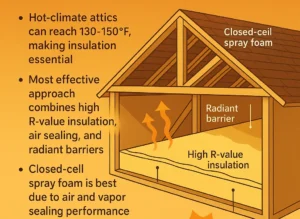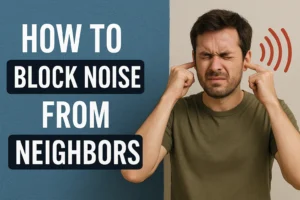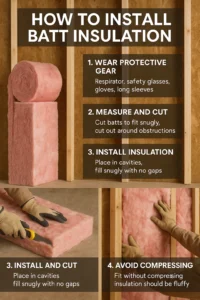How To Insulate Your House for Winter: Reasons and Recommendations
As temperatures start to drop, ensure that your home is properly insulated to keep the cold air out and the warm air in. Not only does proper insulation keep you warm during the winter months, but it can also save you money on your energy bills.
This article discusses the reasons why you should insulate your home and provide recommendations for the best ways to insulate your house for winter.
Reasons to Insulate Your Home for Winter
A properly insulated home can reduce heat loss and keep your living spaces warm, even during the coldest months of the year. This means that your heating systems don’t have to work as hard to maintain a comfortable temperature, resulting in lower heating costs and energy bills.
Insulating your home is, therefore, one of the best ways to save energy. According to the U.S. Department of Energy, proper insulation can save homeowners up to 15% on heating and cooling costs (or an average of 11% on total energy costs) by air sealing their homes and adding insulation in attics, floors over crawl spaces, and accessible basement rim joist.
As a result, insulation helps to keep warm air inside your home, preventing cold air from entering. This means that you can stay warm and comfortable during the winter months without having to rely on expensive heating systems. It can also prevent air from escaping your home, which can be a major contributor to high energy bills. Proper insulation can help to seal gaps and cracks around the house, ensuring that warm air stays inside.
Finally, insulation can also protect your home against moisture, which can cause damage to the structure and create health issues such as mold and mildew. Proper insulation can prevent moisture from entering your home and keep your living spaces dry and comfortable.
Ways to Insulate Your Home for Winter
With proper insulation, you can reduce heat loss and control your energy bills, especially during the colder months. There are many ways to insulate your home, from adding insulation to the walls and attic to sealing gaps and leaks around windows and doors.
Wall Insulation
Insulating the walls of your home is one of the best ways to keep the cold air out and the warm air in. This can be done by adding a layer of insulation inside the walls or by using spray foam insulation. Insulating exterior walls is especially important, as they are the first line of defense against the cold.
Attic Insulation
Insulating your attic is another great way to keep your home warm in winter. Heat rises, so if your attic isn’t insulated, a significant amount of heat can escape through the roof. Adding insulation to your attic can make a big difference in the amount of heat that escapes, reducing your heating bill and energy costs.
Window and Door Insulation
Windows and doors are common areas where heat can escape from your home. To prevent this, make sure that all windows and doors are properly sealed and insulated. You can use weather stripping or caulking to seal gaps and prevent air from escaping.
Floor Insulation
Insulating your floors can also help to keep your home warm in winter. If your home has a crawl space or basement, adding insulation to the floors can prevent cold air from entering your living spaces.
Spray Foam Insulation
Spray foam insulation is a popular choice for insulating homes, as it can easily conform to any shape or size of space. It can be used to insulate walls, attics, and even crawl spaces. Spray foam insulation provides excellent air sealing, preventing air from escaping your home and helping to keep your living spaces warm.
Schedule a Home Energy Audit
If you’re not sure where to start, take a look at your home’s heating bill or schedule a home energy audit. This will help you determine where you’re losing the most heat and where insulation can make the most difference.
You can contact us and request your free Home Comfort Estimate or ask for more information and advice on how to properly insulate your home. Our home energy audit will help you identify areas where heat is escaping and where insulation is needed.
Once you know exactly what needs to be done, all you need to do is to choose one of the above kinds of insulation, depending on your needs.
You should also keep in mind that insulation may not be the only solution to your home’s energy woes. If your heating systems are older or inefficient, or if your home has other structural issues, insulating alone won’t solve all of your problems. Additionally, stay on top of any changes in your home’s exterior or interior, such as new windows or doors, as these can affect the amount of heat that escapes.
Choose the Right Insulation for Your Home
Insulating your home can make a big difference in your comfort and your wallet. With a little bit of effort and some investment, you can keep warm in winter and save money on your heating bills.
There are many ways to insulate your home, from adding insulation to walls and attics to sealing gaps and leaks around windows and doors. Properly insulating your home can reduce heat loss, control energy costs, and keep your home warm and comfortable throughout the winter months. So, if you haven’t already, consider insulating your home today and start enjoying the benefits of a properly insulated and energy-efficient home.
Call Pure Eco Inc. today at (877) 870-7998 and find out how to insulate your home for winter and request your free Home Comfort Estimate!




